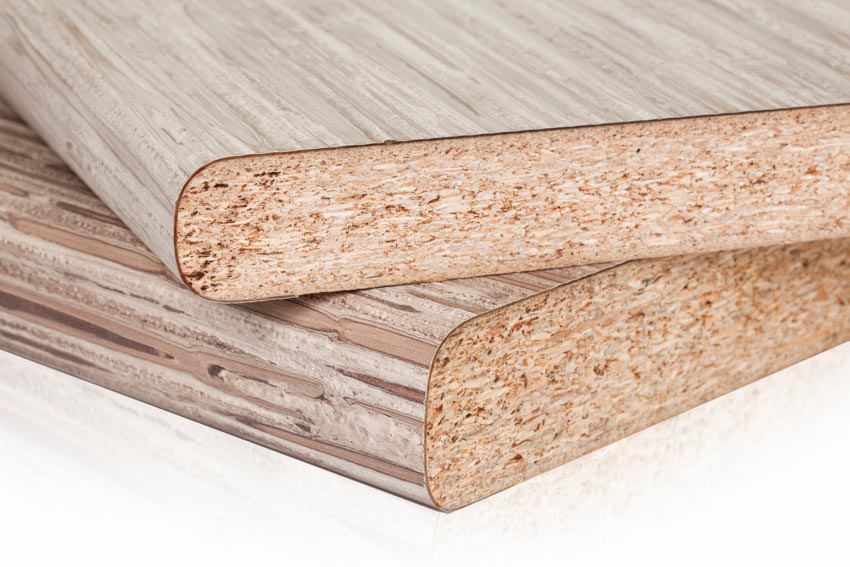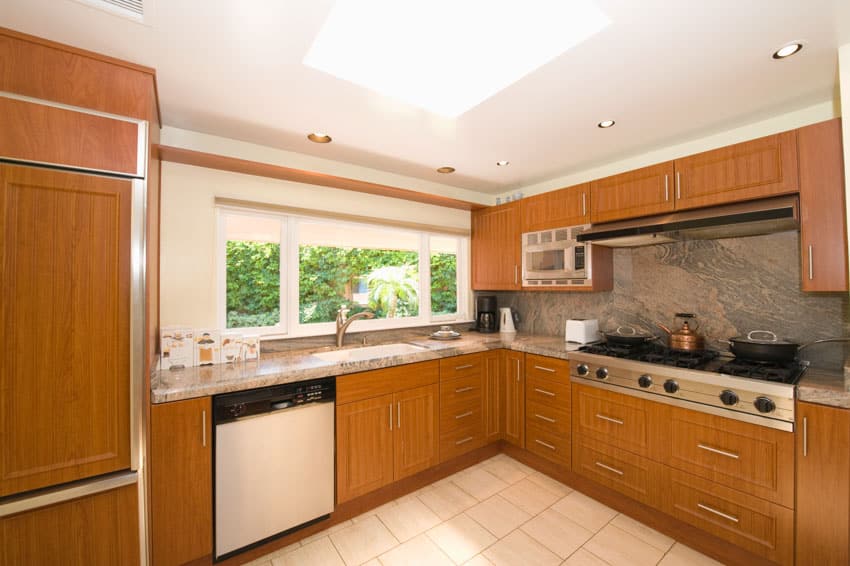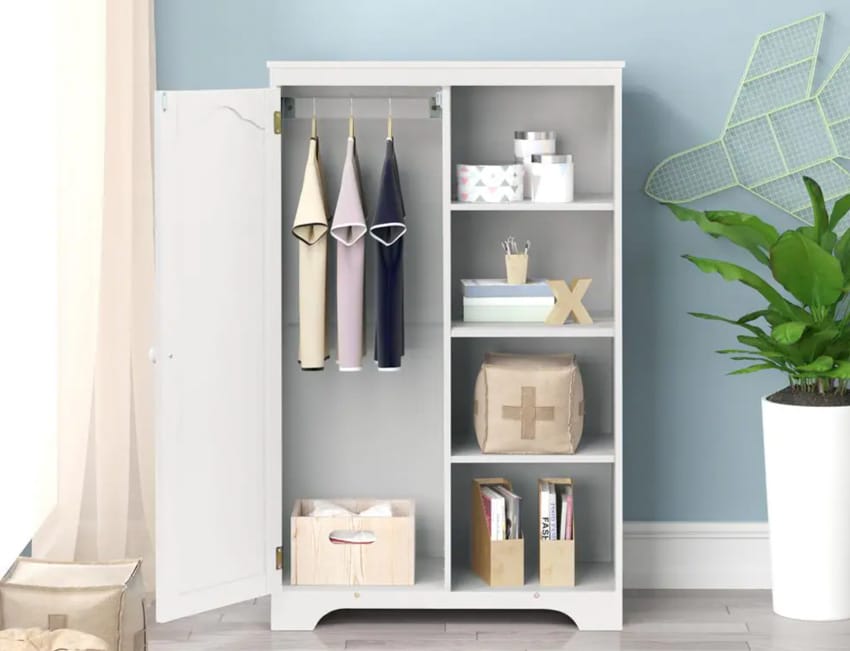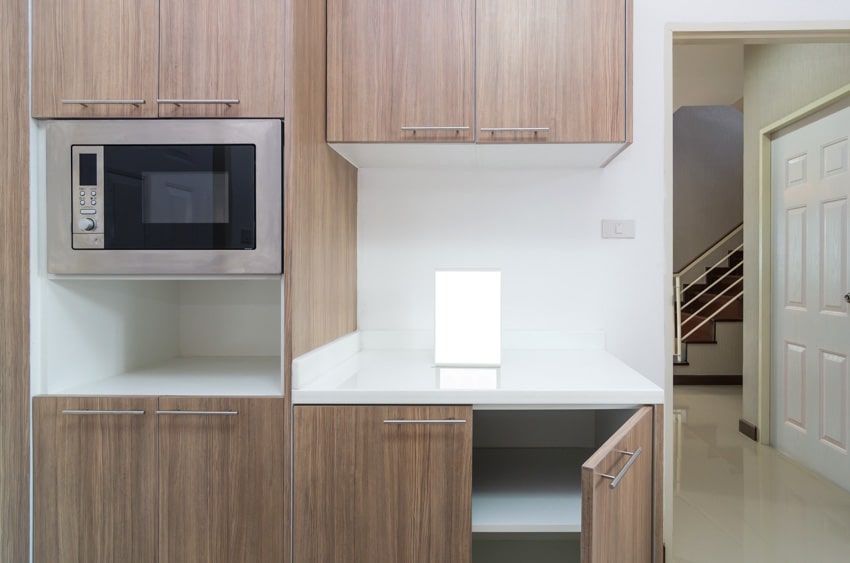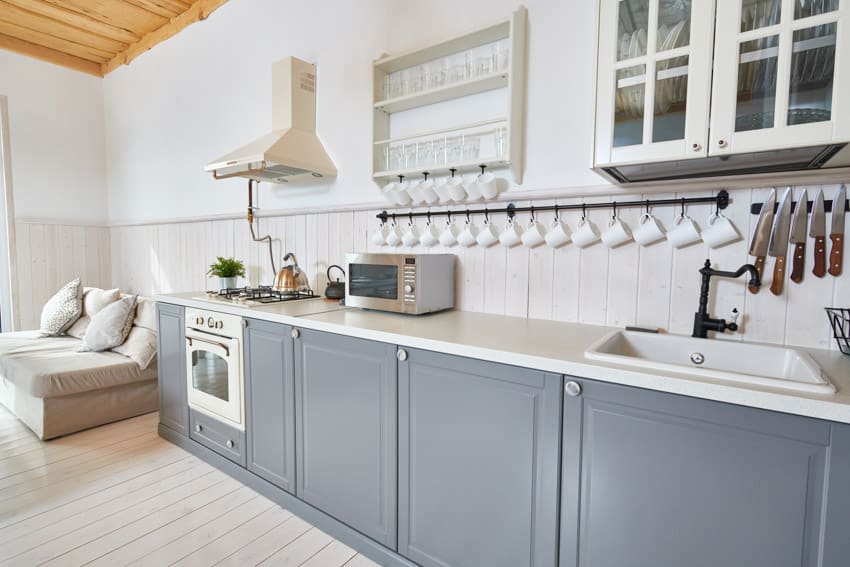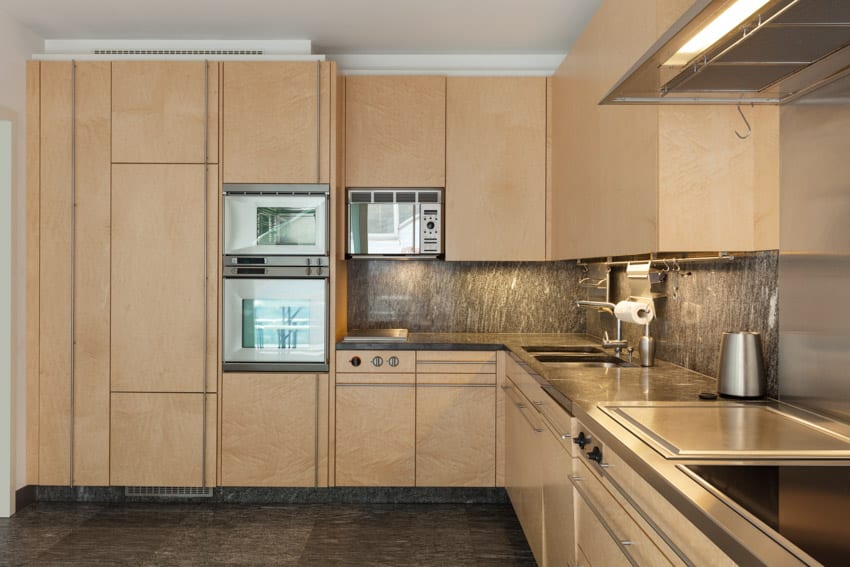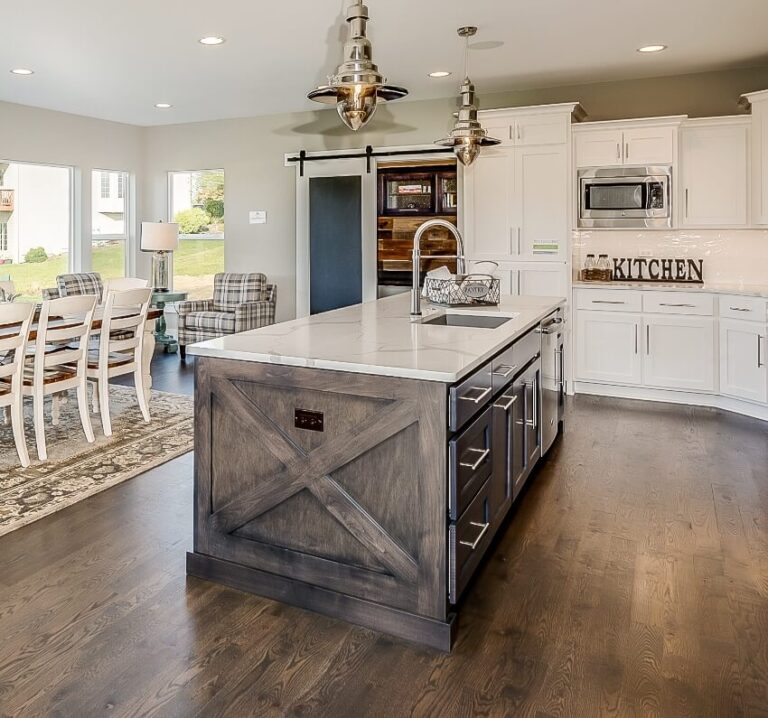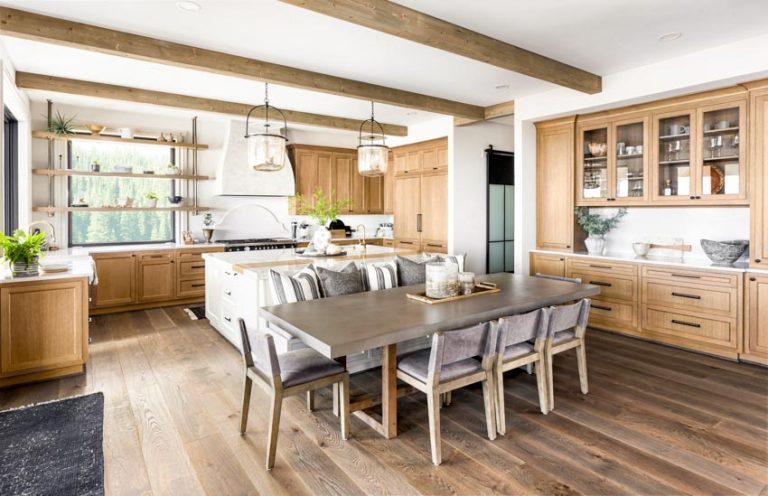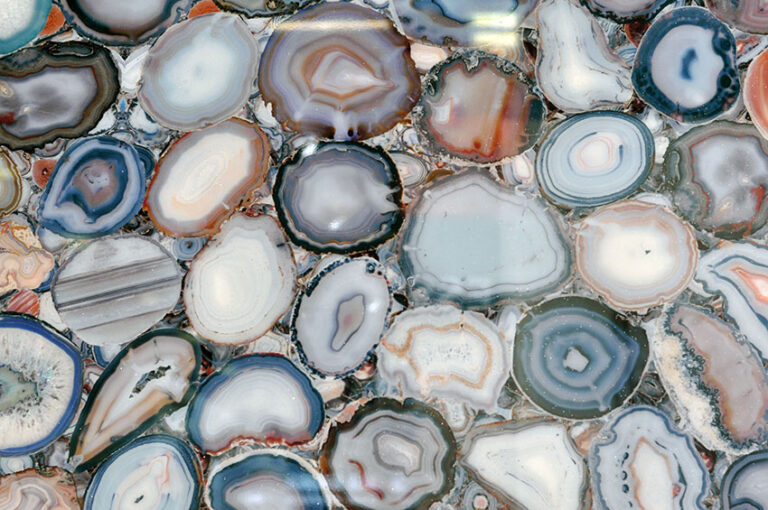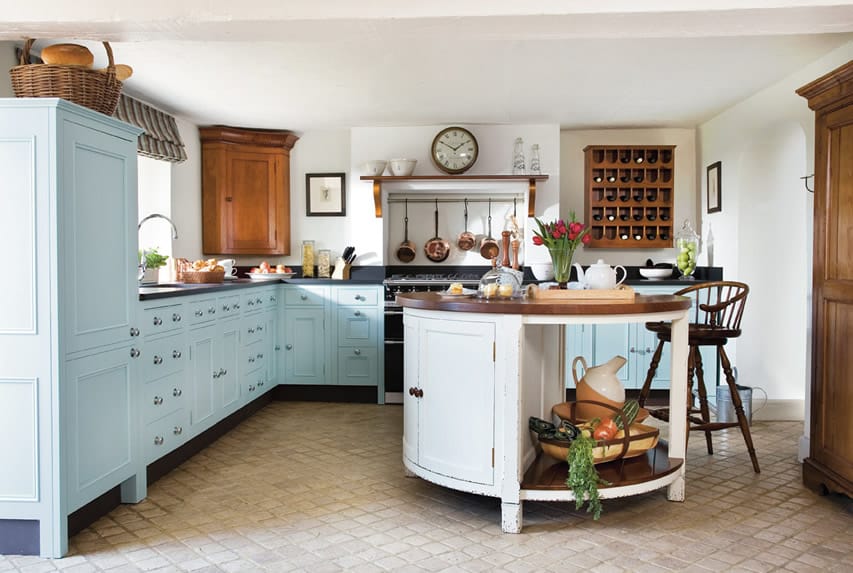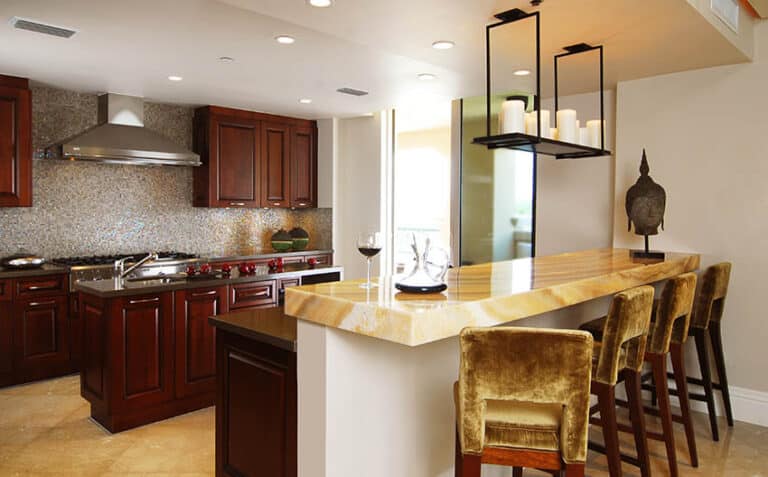Pressed Wood Cabinets (Design Types & Cleaning Tips)
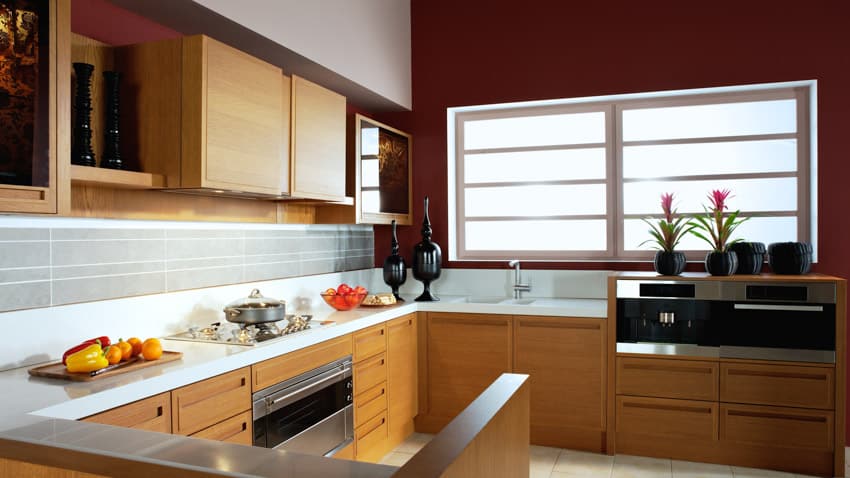
Although hardwood cabinets remain an attractive and well-known solution, the process of making modernized cabinets has made significant progress in terms of technology, presenting the opportunity for a much broader range of options.
Thus, before you become distracted by these numerous options or get stuck in a state of confusion, it is indeed a good idea to learn more about how different types of cabinets are made and what that entails for your cabinet-making project. In this case, we will be talking about pressed wood cabinets.
Pressed wood has numerous applications, including pallet hauling, furniture construction, and even the creation of gorgeous veneers. And yes, pressed wood can also be used to produce high-grade cabinets.
Characteristics Of Pressed Wood
Pressed wood is an engineered wood that has been pressed together under heat and pressure to produce a unified construction. It is also sometimes referred to as a laminate, faux wood, or compressed wood. It pertains to any item of furniture that is made from wood paneling, wood veneers, wood shavings, sawdust, or wood fibers and then bonded with an adhesive.
A bonding compound like strong glue can be used to ensure that the particles stick firmly and heat is frequently provided during the pressing procedure. Sanding is required on press wood to either scuff the smooth wood surface or even out the rough surface. Despite its low cost and adaptability, pressed wood is not particularly robust and can be quickly degraded at some point.
Pressed wood is normally available in three variations: particle board, medium-density fiberboard, and plywood.
A particle board is a type of pressed wood. Particle board pressed wood is frequently used in low-cost household furniture such as cabinets, wardrobes, and bookshelves. A thin sheet of laminate or veneer is applied on pressed wood. As a result, it is lightweight and, to a certain degree, reliable.
However, because particle board chips readily, supplementary types of wood veneer are frequently placed over it to protect it from severe impacts. Because veneers may resemble the texture and tone of solid wood, this wood product has the potential to appear quite appealing.
Moreover, medium-density fiberboard, also known as MDF, is yet another form of pressed wood that is entirely composed of hardwood as well as softwood fibers instead of a fiber-veneer composite. MDF is significantly thicker than particleboard, which makes it substantially stronger.
MDF, the same as hardwoods and softwoods, can be trimmed, bonded, or fastened; however, certain types of nails may not adhere properly. When MDF pieces are cut, microscopic dust can be emitted into the atmosphere.
This dust can be harmful to the cutter’s health because the bonding agent used to create this pressed wood typically includes formaldehyde. Hence, when working with MDF, respirators should always be worn.
Plywood is also categorized as pressed wood. It is a manufactured wood product constructed of wood veneer panels. The planks of plywood wood veneer are pressed and glued together to form one homogeneous piece.
Cross-graining is a manufacturing procedure that lowers shrinkage and contraction of plywood while enhancing panel strength and stability.
Pressed Wood Kitchen Cabinets
There are different types of pressed wood for kitchen cabinets as aforementioned – particle board, MDF, and plywood options. Particle board products offer unique advantages for manufacturing kitchen cabinets, particularly improved dimensional stability. It does not distort as a result of temperature variations or other environmental conditions. Most significantly, particle board is less expensive than plywood and MDF.
Furthermore, particle boards are frequently created from pressed wood fragments that are classified as waste. Numerous wood makers use the remnants to manufacture particle boards. As a result, particle boards are less costly and can fit well in both traditional and custom kitchen decor. Choosing a particle board can save around 8% to 12% on kitchen cabinet costs.
However, it’s important to ask the right questions about the quality and durability of the particle board you’re purchasing. Unfortunately, one big disadvantage of particle board kitchen cabinets is their susceptibility to moisture. Particle board will expand if moisture is accumulated through the end grain. A persistent drop of water, for instance, may cause problems if it comes into direct contact with the untreated bottom edge of your kitchen cabinet box.
To alleviate this potential issue, edge-banding the corners of all particle board pieces may be ideal. When installing kitchen cabinet boxes made out of particle board, the builder may additionally use a clear finish to protect the bottom edges, and ensure the longevity of your project.
The durability of particle board cabinets is determined by the particle size, the adhesive that binds it together, as well as the density of the board. Since particle board is created from a variety of wood scraps, its quality can differ greatly. Smaller particles improve the board’s quality, density, and weight.
Nevertheless, if you prefer a particle board with greater capabilities, Medium-Density Fiberboard (MDF) would be an incredible option for making kitchen cabinetry. It is also of good quality and falls under the category of pressed wood.
One of the most advantageous properties of wood versus MDF is that it is a firmer and more durable material for making kitchen cabinets. Additionally, the aesthetic appeal of wood grain can enhance your overall decor. When treated with stains or paint, the underlying grain in wood stays and provides dimension to your kitchen surfaces.
Scuffs and dents are readily fixed with sandpaper as well as a fresh layer of stain or paint. These cabinets can be thought of as a blank canvas, on which you can paint using a paint brush to create contemporary beauty with the right tools and maintenance.
MDF is more resistant to fluctuations in temperature and humidity, and it features a smooth, grain-less surface, making it a superior choice for painted kitchen cabinets. The adhesives that bind the wood fibers together make the material even more resistant to termites and vermin. Unfortunately, MDF may be quite weighty at times, making large kitchen cabinets challenging to install.
When it comes to kitchen cabinets, plywood is widely regarded as a suitable material. Since it retains screws as well as other structural fasteners more securely, plywood does have a longer lifespan in kitchen cabinet construction. It possesses higher tensile and bending qualities as well as a respectable compressive strength benefit.
Plywood is also lighter than particle board, which is useful when mounting sizable kitchen cabinets. Furthermore, plywood is more resilient to scratches and dents than particle board and keeps adhesive joints together more efficiently.
Indeed, plywood is a very dependable material for kitchen cabinets. As plywood is more suitable with screws, bolts, and other structural fasteners, using it to update your existing kitchen cabinets can ensure longer endurance.
Its numerous layers of wood allow it to withstand more load and force. The quality of plywood kitchen cabinets, on the other hand, is determined by the number of wood composites and the thickness of the pressed wood.
The reliability of well-built plywood cabinet boxes is outstanding, and the beauty of using such materials lies in their functionality and durability. They are, nevertheless, more expensive than particle boards offered by some company choices.
Low-quality plywood can also be more prone to moisture damage. Hence, always go for plywood with a reputable brand to ensure you are getting a top-quality plywood kitchen cabinetry that requires minimal maintenance.
Storage Cabinets
Many interior designers and homeowners choose solid wood as one of the primary construction materials for storage cabinets. However, because solid wood expands and compresses, it is not usually the greatest choice.
Most of the time, pressed wood components are used alternatively as they are equally reliable and much less expensive. The most common types of pressed wood used for storage cabinet boxes are medium-density fiberboard (MDF), plywood, and particleboard, which are all types of pressed wood.
Because of the adaptability of pressed wood, the layers can be adjusted to provide both strength and aesthetics.This cabinetry comes in a variety of sizes even extra-large ones, which can accommodate various tools for maintenance. Additionally, contemporary designs are now readily available due to the versatility of pressed wood.
Furthermore, due to its exceptional strength, it is often a particularly durable material for storage cabinets. Because pressed wood is made with an alternating pattern of wood grains, it lasts longer than certain varieties of solid wood.
Cabinet Doors
When it comes to cabinet doors, pressed wood is widely regarded as an outstanding material. Since it holds the screws and other structural attachments of the types of cabinet hardware installed on it more properly, this material offers a greater construction lifespan.
Furthermore, because pressed wood is more stable, it is commonly used in door panels, while a solid wood panel will expand and contract more with fluctuations in temperature.
It is suitable for door frames, although it may be challenging to mill with sharper blades without creating tear-out. Also, the uncovered edges of pressed wood are usually unsightly, thus manufacturers cover them with edge banding.
How To Clean
Begin with a Mild Cleaning Solution: The most straightforward treatment is a solution of dish soap and slightly heated water.
Aggressive dishwashing soaps should be avoided since they might be cruel on the surface of your pressed wood cabinets. Use a milder one that has been diluted with one part dish soap and two parts slightly heated water.
Apply the Solution to a Microfiber Towel: The ideal item for cleaning pressed wood cabinets is a microfiber towel. When employed to wipe delicate surfaces, they are renowned to be mild on surfaces and will hardly produce marks. This maintenance routine can help preserve the beauty of your cabinets.
You need to soak the microfiber towel in a small amount of the cleaning solution. Squeeze any extra water out. To dislodge anything that is on your cabinetry, carefully wipe the area with marks or spots using a towel in a rotating motion.
If the spot or mark is thick, apply greater pressure to the area. Afterward, wipe down the entire surface to facilitate removal and restore the shine to the surface.
Reminders When Cleaning Pressed Wood Cabinets: The most important thing to prevent is pouring the solution straight on the pressed wood surface.
You must avoid getting moisture on the cabinet doors as well. This may have an impact on the finish. You should also avoid allowing water to get into any damaged areas or the hinges since this might cause additional damage and corrode the metals.
You may need to use some gentle scrubbing if a stain or spot is particularly difficult to get rid of. You can also use a soft toothbrush with a gentle brush. Immerse the toothbrush in the mixture and carefully squeeze the excess water. Afterward, scrub the spot or stain away. A stiff toothbrush might leave marks, thus avoid using one.
Lastly, use a moist cloth to wipe off the solution. After wiping, use a dry cloth, ideally a microfiber towel, to dry all the surfaces. All of the methods listed here are straightforward, but it is simply a matter of applying the proper technique to prevent damaging your kitchen cabinets.
Painting
Step-By-Step Instructions on Painting Pressed Wood Cabinets:
• Begin by removing any items that might obstruct your painting procedure.
• Use a respirator to protect your lungs. To safeguard your hands and arms from the paint, wear gloves and long-sleeved clothes. It is best to wear eye protection to prevent sawdust from entering your eyes.
• Get your soft painting brush, sandpaper, and oil-based paint ready.
• Get your soft painting brush, sandpaper, and oil-based paint ready.
• Using a screwdriver, remove the doors and handles. Next, as you pull each drawer away from the cabinetry, push it upward. Grab your screwdriver after you have removed the drawers.
• Remove all of the supports and screws from your doors. After disassembling each drawer knob or handle, place them next to the matching drawer or door.
• Allow wood putty to cure after repairing broken or damaged wood.
• Load your paintbrush with an oil-based primer. On the old cupboard surfaces, apply the primer as a first layer and start painting in a back-and-forth manner.
• Take your new coat of paint and start working on the entire surface with gentle brush strokes.
• As soon as the paint gets dry, apply a protective sealant.
Best Paint To Use
The best paints for pressed wood cabinets are acrylic, latex, or oil-based paints with a shiny or semi-gloss finish.
Can You Stain Pressed Them?
The stain does not adhere well to pressed wood. Instead, you should refinish them with enamel. Even so, pressed wood is not that good for adhesion and might not absorb a stained finish unless it is initially primed.
Steps for Refinishing Pressed Wood Cabinets
• Start separating the parts of the cabinet.
• Put tape on the surfaces that you want to keep dry using painter’s tape.
• Prepare the cabinet and start sanding the entire surface.
• Start applying your primer. Once the primer dries, sand it.
• Start painting the surfaces using acrylic, latex, or oil-based paint.
• Apply more coats until you achieve your desired color.
• Varnish your cabinetry and allow them to dry for 1 day.
• Assemble and display your cabinetry.
See more related content in our article about hardware for oak cabinets on this page.

